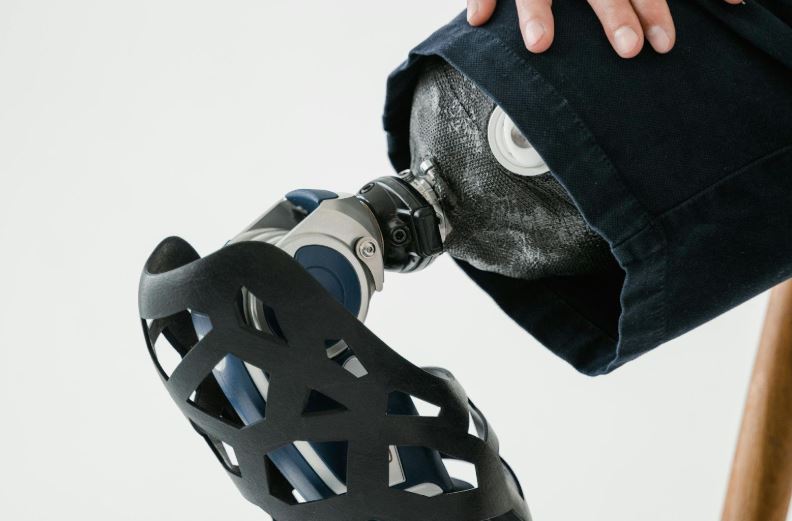Losing a limb is a life-altering experience, but what if technology could restore not just mobility, but also a sense of normalcy and independence? In recent years, prosthetic technology has made groundbreaking strides, offering amputees more than just artificial replacements – these innovations provide enhanced movement, adaptability and even sensory feedback. From AI-powered limbs that respond to muscle signals to 3D-printed prosthetics tailored for a perfect fit, modern advancements are redefining possibilities. But how close are we to prosthetic limbs that truly feel and function like a natural part of the body?
The Evolution of Prosthetic Technology
Historically, prosthetic limbs were rudimentary, focusing primarily on basic functionality rather than comfort or adaptability. Wooden peg legs and rigid artificial limbs were once the norm. However, modern prosthetics integrate cutting-edge materials, robotics, and machine learning, transforming the user experience. Today’s prosthetics are lighter, more responsive, and biomechanically sophisticated, enabling amputees to walk, run, and even regain fine motor skills.
One of the most significant advancements is the introduction of bionic prosthetics. These high-tech limbs use sensors and microprocessors to mimic natural movement. They analyze muscle signals, allowing users to control the prosthesis almost as if it were a natural limb. For individuals who have undergone an amputation of the right thigh, this means greater stability and ease of movement, reducing the risk of falls and long-term complications such as joint strain. These innovations are particularly crucial, as losing a limb above the knee presents additional challenges in balance, mobility, and energy efficiency while walking.
The Role of Artificial Intelligence and Robotics
Artificial intelligence (AI) is playing a crucial role in modern prosthetic development. AI-powered prosthetics can adapt to the user’s movement patterns, making real-time adjustments to optimize balance and efficiency. These smart limbs can also learn from past movements, making them more intuitive over time.
Robotic advancements have further enhanced functionality. Prosthetic legs equipped with motorized knee and ankle joints allow for smoother walking and even stair climbing. Some models can automatically adjust to different terrains, improving safety and comfort. This is particularly transformative for individuals with a right thigh amputation, as maintaining stability without a natural knee joint has historically been a major challenge.
The Rise of 3D-Printed Prosthetics
Cost has long been a barrier to high-quality prosthetics, but 3D printing is changing that. Traditional prosthetic limbs can be prohibitively expensive, often ranging from $5,000 to $50,000, depending on complexity. However, 3D printing technology has drastically reduced costs while increasing customization.
With 3D printing, prosthetics can be tailored to an individual’s exact specifications, ensuring a perfect fit and greater comfort. Additionally, the speed of production is significantly improved – what once took weeks can now be done in days. This is especially beneficial for children, who frequently outgrow their prosthetic limbs and require replacements.
Neural Integration: The Future of Prosthetics
One of the most exciting areas of research is neural integration, where prosthetic limbs are directly connected to the nervous system. This allows for mind-controlled prosthetics, enabling users to move their artificial limbs simply by thinking about it. Scientists are working on refining this technology to improve responsiveness and sensory feedback, so users can "feel" through their prosthetics.
For individuals who have lost a right thigh, neural integration could mean regaining near-natural control over their artificial leg, drastically improving daily life. This technology is still in development, but early trials show promising results, bringing us closer to fully functional bionic limbs.
The Economic and Social Impact
Beyond medical benefits, prosthetic innovations have significant economic and social implications. Improved prosthetic technology enables amputees to remain active in the workforce, reducing dependency on disability benefits and healthcare costs. Additionally, the psychological benefits – such as regained confidence and social inclusion – are immeasurable.
Governments and healthcare providers are increasingly recognizing the importance of making advanced prosthetics accessible. Insurance companies are expanding coverage, and nonprofit organizations are working to provide affordable solutions in developing countries. The combination of technological innovation and policy improvements is creating a future where high-quality prosthetics are no longer a luxury but a standard.
Conclusion
The advancements in prosthetic technology are transforming lives, offering new possibilities for those who have undergone a right thigh amputation. With AI-driven bionic limbs, robotic enhancements, 3D printing, and neural integration, the future of prosthetics is brighter than ever. As these technologies continue to evolve, accessibility and affordability will be key factors in ensuring that every amputee, regardless of financial status, can benefit from these life-changing innovations.
This article does not necessarily reflect the opinions of the editors or management of EconoTimes.



 Samsung SDI Secures Major LFP Battery Supply Deal in the U.S.
Samsung SDI Secures Major LFP Battery Supply Deal in the U.S.  GameStop Misses Q3 Revenue Estimates as Digital Shift Pressures Growth
GameStop Misses Q3 Revenue Estimates as Digital Shift Pressures Growth  China Adds Domestic AI Chips to Government Procurement List as U.S. Considers Easing Nvidia Export Curbs
China Adds Domestic AI Chips to Government Procurement List as U.S. Considers Easing Nvidia Export Curbs  Evercore Reaffirms Alphabet’s Search Dominance as AI Competition Intensifies
Evercore Reaffirms Alphabet’s Search Dominance as AI Competition Intensifies  SK Hynix Considers U.S. ADR Listing to Boost Shareholder Value Amid Rising AI Chip Demand
SK Hynix Considers U.S. ADR Listing to Boost Shareholder Value Amid Rising AI Chip Demand  Moore Threads Stock Slides After Risk Warning Despite 600% Surge Since IPO
Moore Threads Stock Slides After Risk Warning Despite 600% Surge Since IPO  ADB Approves $400 Million Loan to Boost Ease of Doing Business in the Philippines
ADB Approves $400 Million Loan to Boost Ease of Doing Business in the Philippines  ANZ Faces Legal Battle as Former CEO Shayne Elliott Sues Over A$13.5 Million Bonus Dispute
ANZ Faces Legal Battle as Former CEO Shayne Elliott Sues Over A$13.5 Million Bonus Dispute  Azul Airlines Wins Court Approval for $2 Billion Debt Restructuring and New Capital Raise
Azul Airlines Wins Court Approval for $2 Billion Debt Restructuring and New Capital Raise  Gulf Sovereign Funds Unite in Paramount–Skydance Bid for Warner Bros Discovery
Gulf Sovereign Funds Unite in Paramount–Skydance Bid for Warner Bros Discovery  JD.com Pledges 22 Billion Yuan Housing Support for Couriers as China’s Instant Retail Competition Heats Up
JD.com Pledges 22 Billion Yuan Housing Support for Couriers as China’s Instant Retail Competition Heats Up  Trello Outage Disrupts Users as Access Issues Hit Atlassian’s Work Management Platform
Trello Outage Disrupts Users as Access Issues Hit Atlassian’s Work Management Platform  SoftBank Shares Slide as Oracle’s AI Spending Plans Fuel Market Jitters
SoftBank Shares Slide as Oracle’s AI Spending Plans Fuel Market Jitters  Intel’s Testing of China-Linked Chipmaking Tools Raises U.S. National Security Concerns
Intel’s Testing of China-Linked Chipmaking Tools Raises U.S. National Security Concerns  Coca-Cola’s Costa Coffee Sale Faces Uncertainty as Talks With TDR Capital Hit Snag
Coca-Cola’s Costa Coffee Sale Faces Uncertainty as Talks With TDR Capital Hit Snag  Nvidia Develops New Location-Verification Technology for AI Chips
Nvidia Develops New Location-Verification Technology for AI Chips  EU Court Cuts Intel Antitrust Fine to €237 Million Amid Long-Running AMD Dispute
EU Court Cuts Intel Antitrust Fine to €237 Million Amid Long-Running AMD Dispute 































